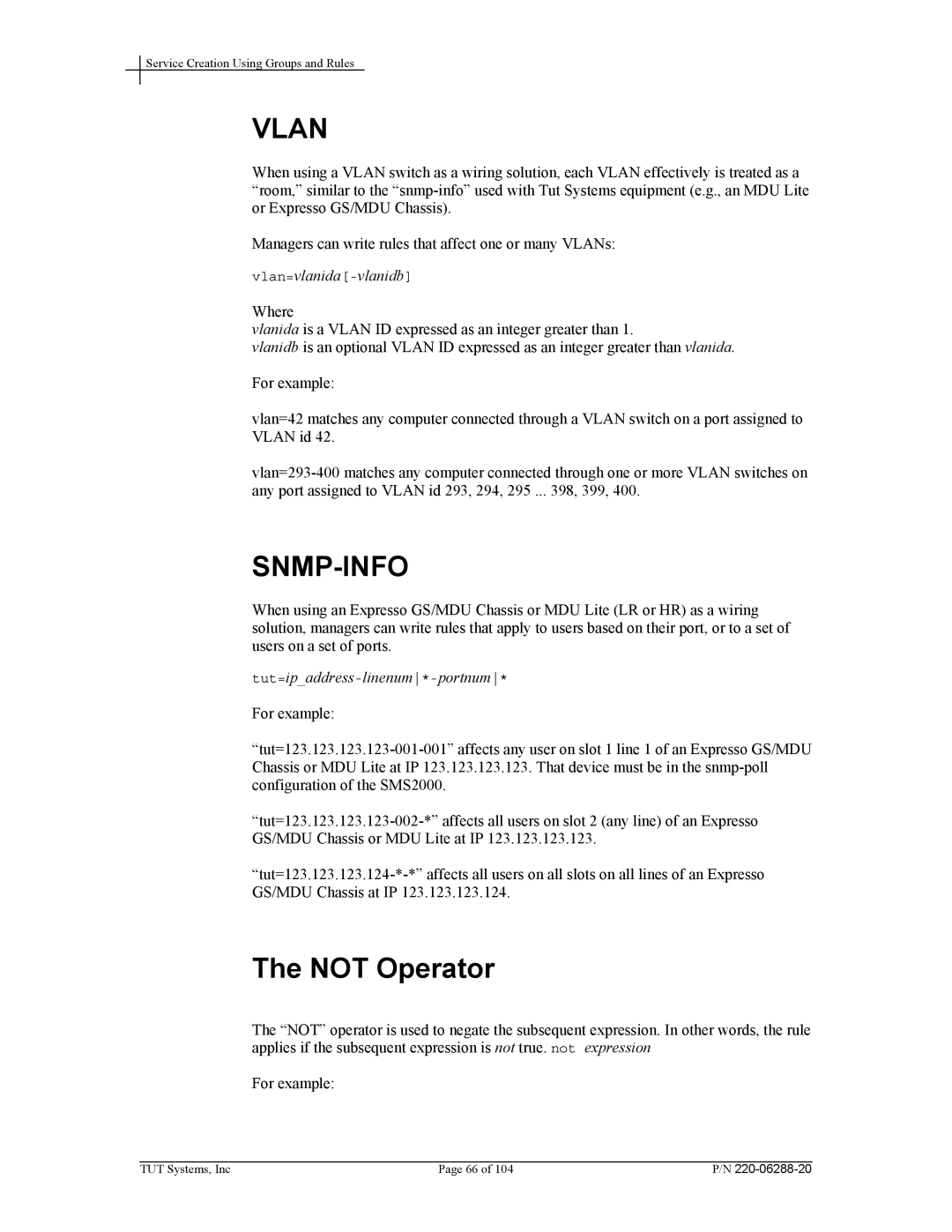
Service Creation Using Groups and Rules
VLAN
When using a VLAN switch as a wiring solution, each VLAN effectively is treated as a “room,” similar to the
Managers can write rules that affect one or many VLANs:
vlan=vlanida[-vlanidb]
Where
vlanida is a VLAN ID expressed as an integer greater than 1.
vlanidb is an optional VLAN ID expressed as an integer greater than vlanida.
For example:
vlan=42 matches any computer connected through a VLAN switch on a port assigned to VLAN id 42.
SNMP-INFO
When using an Expresso GS/MDU Chassis or MDU Lite (LR or HR) as a wiring solution, managers can write rules that apply to users based on their port, or to a set of users on a set of ports.
tut=ip_address-linenum*-portnum*
For example:
The NOT Operator
The “NOT” operator is used to negate the subsequent expression. In other words, the rule applies if the subsequent expression is not true. not expression
For example:
TUT Systems, Inc | Page 66 of 104 | P/N |
